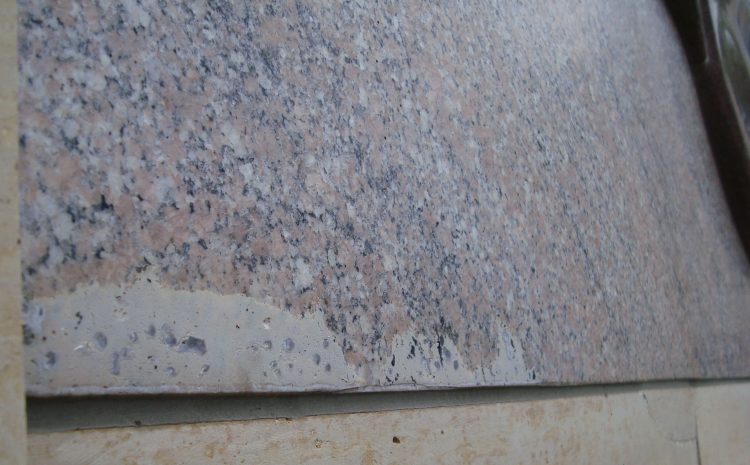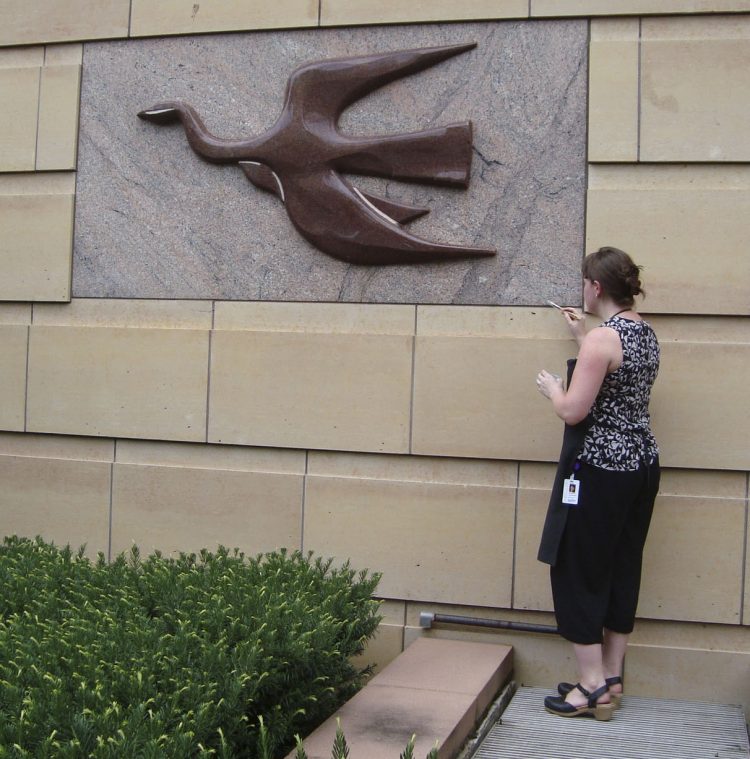This two-part blog post is by Jen Munch, former intern in The Phillips Collection’s Conservation department and current Graduate Fellow in Art Conservation at SUNY Buffalo State. Read Part I here.
Later renovations and expansions required the sculpture’s deinstallation and relocation. During one deinstallation in 1987, the heavy stone sculpture was damaged at two locations along the slab’s bottom edge, where small sections of the stone were chipped away. In 1989, conservators repaired the sculpture by filling the two losses with chips of stone from the back of the artwork, plus an epoxy material that matched the colors of the grey and pink slab. Over time, the epoxy’s colors faded to beige, due to the strong sunlight that this artwork is exposed to. In 2004-5, the faded fills were replaced with new epoxy fills, with the goal of better matching the color of the surrounding stone. By the summer of 2017, the “new” fills again had faded to beige [fig.7, 8].

Figure 8: Before treatment, 2017. The discolored fills are circled.
The aging effects of sunlight are well known and documented. Just as the sun can damage your skin or the fabric of a sofa placed near a window, the sun’s rays can degrade many pigments. Ultraviolet rays are the most damaging, but visible light will also cause some degree of damage.
In 2017, the epoxy fills were still structurally stable but their beige color no longer matched the surrounding stone. The fills were visible and distracting. On one warm August day in 2017 [fig. 9], I spent the afternoon “in-painting” the beige epoxy to make it match the surrounding area. I applied small amounts of special conservation-grade paints atop the epoxy. The paints I used have good aging properties, but they, too, will eventually fade and need to be replaced. The work I did, and the materials I used, are documented with both written reports and photography, taken before and after treatment [fig. 10]. This information will be valuable to the next conservator who has to treat this artwork, just as the reports from the 1989 and 2004-5 treatments were helpful to me.

Figure 9: The author performing a conservation treatment on Bird by Pierre Bourdelle. Photo: Kim Sandara
I enjoyed working on this sculpture and getting to learn about its history. It was a pleasant surprise to learn that this beautiful bird was custom-made for the Phillips and is a work of art, not just a logo. I hope you have enjoyed reading about this artwork, and will look for the bird the next time you visit The Phillips Collection.

Figure 10: After treatment, 2017. The epoxy fills have been in-painted to match the stone.

